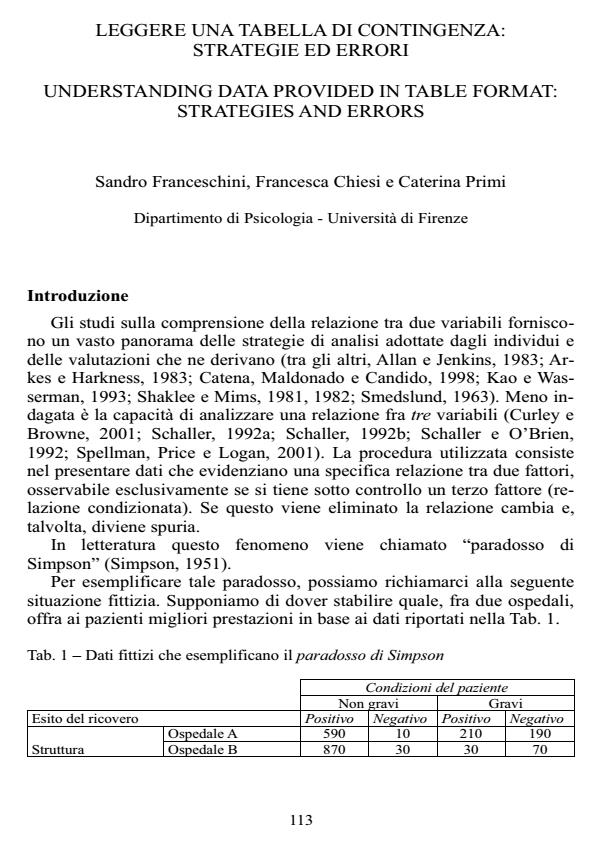Leggere una tabella di contingenza: strategie ed errori
Titolo Rivista RICERCHE DI PSICOLOGIA
Autori/Curatori Sandro Franceschini, Francesca Chiesi, Caterina Primi
Anno di pubblicazione 2007 Fascicolo 2006/4
Lingua Italiano Numero pagine 13 P. 113-125 Dimensione file 93 KB
DOI
Il DOI è il codice a barre della proprietà intellettuale: per saperne di più
clicca qui
Qui sotto puoi vedere in anteprima la prima pagina di questo articolo.
Se questo articolo ti interessa, lo puoi acquistare (e scaricare in formato pdf) seguendo le facili indicazioni per acquistare il download credit. Acquista Download Credits per scaricare questo Articolo in formato PDF

FrancoAngeli è membro della Publishers International Linking Association, Inc (PILA)associazione indipendente e non profit per facilitare (attraverso i servizi tecnologici implementati da CrossRef.org) l’accesso degli studiosi ai contenuti digitali nelle pubblicazioni professionali e scientifiche
The aim of this study is to ascertain if naive people are able to read data provided in table format (three-way) and which information can increase or prevent a correct understanding. The data utilized in the present research illustrated the Simpson’s paradox, in which the relationship between two variable differs depending on whether a third variable is taken in account. Participants, divided in four experimental conditions differentiated by information given about the three variables, had to make a judgement and to report their reasoning. The different experimental conditions lead to different judgements and elicited the use of different strategies. Naive people are able to read the trivariate relationship when the critical variable in the Simpson’s paradox was stressed.
Sandro Franceschini, Francesca Chiesi, Caterina Primi, Leggere una tabella di contingenza: strategie ed errori in "RICERCHE DI PSICOLOGIA " 4/2006, pp 113-125, DOI: